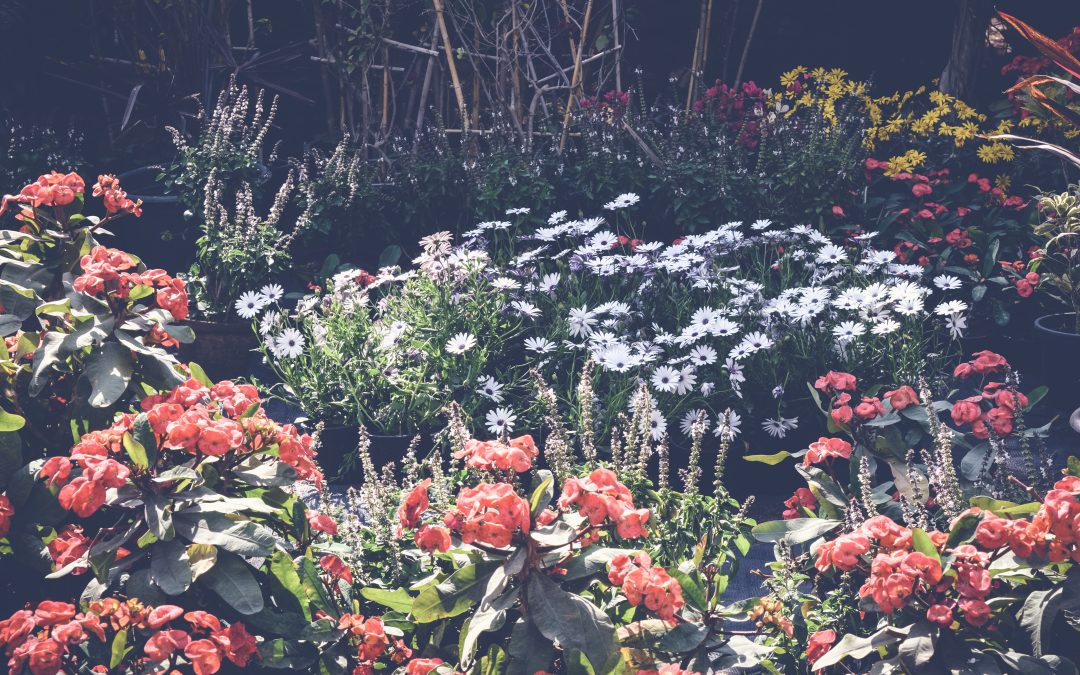Winter preparations help keep plants healthy and soil in good condition, setting the stage for a vibrant garden in the spring. Although Florida’s winters are milder, they still present unique challenges for gardeners.
This guide will walk you through important steps to prepare your Florida garden for winter. It will focus on plant care, soil management, and seasonal tasks to ensure a successful growing season.
1. Assess and Prune Your Plants
Check your garden plants for signs of poor health and get rid of any dead, diseased, or damaged leaves. Trimming prevents disease from spreading and promotes healthy plant growth. You should also cut off any old blooms and trim flowering plants, like hibiscus and bougainvillea, to keep them in shape. Avoid heavy trimming in winter, as many plants are dormant, and cutting them too much can slow down their recovery.
2. Protect Tender Plants
During Florida’s mild winters, it’s important to protect sensitive and tropical plants from even slight temperature drops. Shield these plants from cold snaps by using frost blankets or garden fabric. If you have plants in containers, consider moving them to a sheltered location like a garage or covered patio to minimize their exposure to the elements.
3. Adjust Watering Practices
Cooler temperatures and reduced sunlight slow down plant growth and evaporation, so water your garden less often. Since overwatering in winter can cause root rot, you should check the soil moisture and water levels when necessary. Reduce lawn watering to avoid too much moisture, which can lead to fungal diseases.
4. Mulch and Compost
Mulch provides insulation for plant roots and helps retain soil moisture. Good choices for Florida gardens are pine straw, wood chips, or leaves. They break down slowly, adding nutrients to the soil.
You should also consider adding compost to enrich the soil in your garden beds. It improves soil structure, provides essential nutrients, and helps the soil retain moisture.
5. Manage Pests and Diseases
Pests and diseases may become more active during winter. Check your plants regularly for signs of aphids, whiteflies, or spider mites, which can cause problems in the cooler weather. Use insecticidal soap or neem oil to manage infestations naturally. Watch for fungal diseases, especially in damp areas, and promptly remove any affected plant material.
6. Winterize Your Irrigation System
Prepare your irrigation system for winter to avoid damage from freezing temperatures. This usually means turning off the system, draining any remaining water, and disconnecting hoses. For more complex systems, it’s best to consult a professional to ensure everything is properly prepared for winter. This will help prevent leaks and damage when the system is turned back on in the spring.
7. Prepare Your Soil
Winter is a good time to prepare your soil for the next growing season. First, test your soil’s pH and nutrient levels to see if any adjustments are needed. To improve the soil’s fertility and structure, add organic matter like compost or aged manure. Mix the amendments into the soil using a garden fork or by tilling. This process helps create a nutrient-rich environment that supports healthy plant growth.
8. Protect Outdoor Structures
Remember to check and take care of outdoor structures like garden beds, trellises, and fences. Fix any damage and clean up debris to prevent it from getting worse over the winter. For wooden structures, put on a protective sealant to stop moisture damage. Doing this will ensure your garden stays in good shape and is all set for planting in the spring.
A professional landscaper can help you with this step, saving you time and effort. They can also offer advice on specific plants and soil conditions in your area.
9. Maintain Garden Tools
Clean, sharpen, and oil your tools to keep them in good condition. Store them in a dry, protected place to prevent rust and damage. Proper tool maintenance helps them last longer and prepares you for the busy gardening season ahead.
10. Plan for Spring
Use the winter season to research and choose new plants, design garden layouts, and make necessary changes to your garden plan. Consider adding new varieties or trying different planting techniques. Planning will help you start making garden changes as soon as spring comes. You can also contact landscaping agencies to help you with any special needs.
11. Keep an Eye on Weather Forecasts
Stay updated on weather forecasts and be ready to act if cold weather or severe conditions are predicted. Have frost blankets and other protective materials to cover sensitive plants as needed. Checking the weather lets you make timely adjustments and protect your garden from unexpected challenges.
These steps will help your garden withstand winter and thrive throughout the year. If you’re looking to streamline the winter preparations, you can consult our team at Sarasota Landscaping Inc. We offer expert landscaping design and installation services for all seasons. Contact us today and protect your garden!

